Garbage a Growing Distraction for Caltrans
Workers Spent 368,000 Hours Collecting 1.3 Million Bags’ Worth in 2018-19
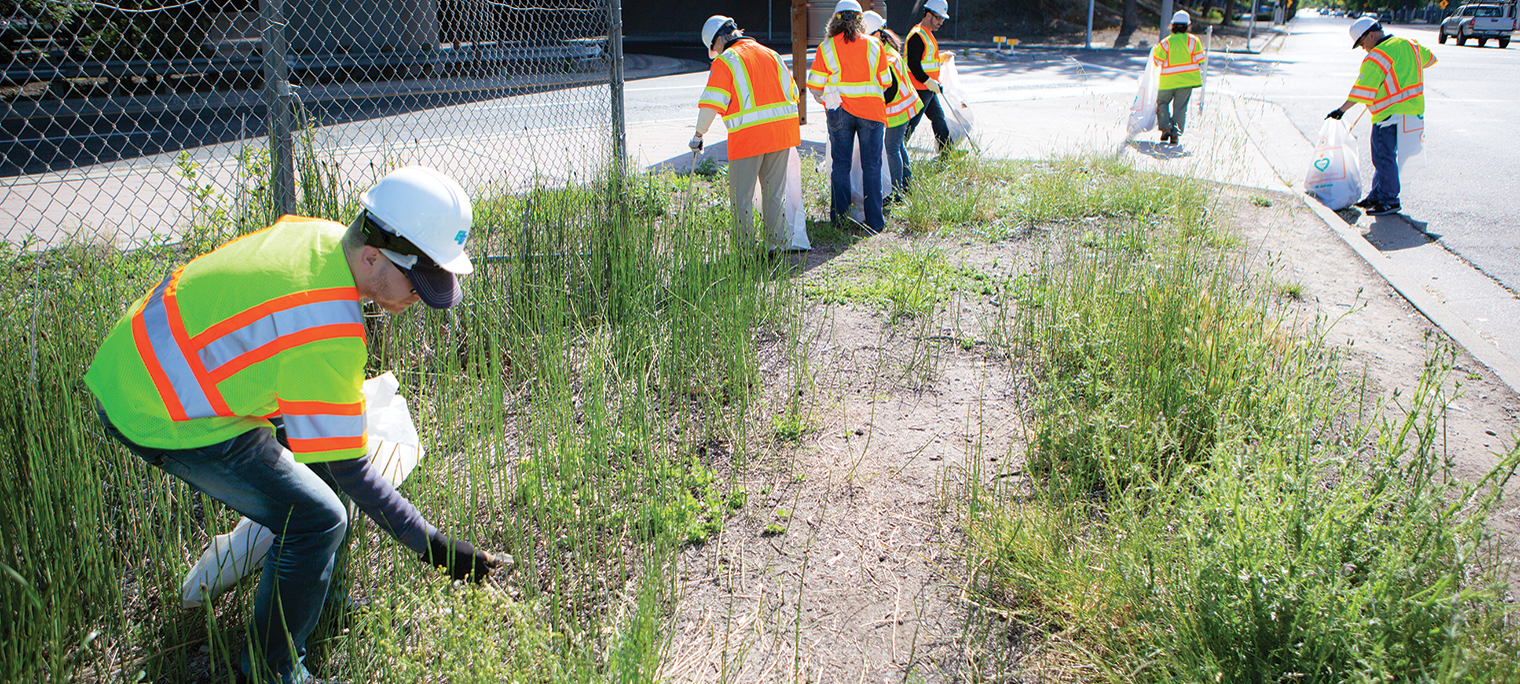
Don’t Trash California — a plea that the public has seen and heard as part of a concerted anti-litter campaign for many years.
That message still hasn’t gotten through to some, judging by the amount of roadside trash that Caltrans picks up.
Keeping the State Highway System litter free is a costly and time-consuming endeavor. During fiscal year (FY) 2018-2019, Caltrans workers alone collected more than 186,000 cubic yards of litter on and along state highway areas.
How much is 186,000 cubic yards? Enough that if stacked one yard high and one yard wide, the line of garbage would extend for approximately 105 miles — from, for example, Santa Ana to Tijuana, or Roseville to San Francisco. It is the approximate equivalent of 1,302,000 bags of trash.
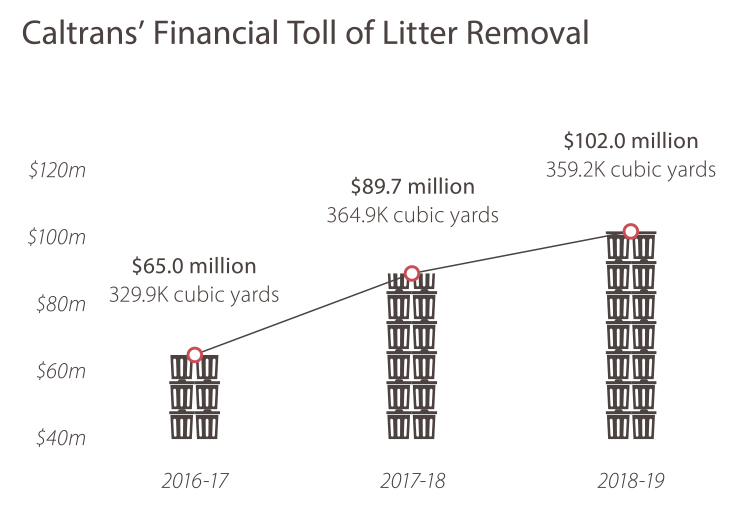
Volume is not the only way to measure how litter weighs down Caltrans. There are substantial expenses involved, too.
In the previous fiscal year that ended June 30, 2019, Caltrans spent more than $102 million on litter and debris collection, a figure that does not include the ballooning costs affiliated with cleaning up the unsheltered encampments. (Those totals are still being compiled.) Expenditures included transportation to and from waste-pickup sites, materials (such as gloves, bags and retrieval tools) and time. In FY 2018-19, Caltrans workers logged about 368,000 hours collecting and disposing of roadside garbage.
How much is 368,000 hours? It is the equivalent to 192 people whose sole job is to bag and scoop up litter for 40 hours a week, 48 weeks a year. In that scenario, almost 1 percent of the Department’s 20,000-plus workforce would be full-time trash collectors.
Time taken away from other road maintenance

Caltrans’ full-time landscape workers increasingly have devoted a large amount of on-the-clock time to litter removal. That means they have less time to perform important duties such as irrigation operations and vegetation control along roadways and on median strips.
Litter’s total financial toll on Caltrans has risen steadily, from $65 million in 2016-2017 (when more than 329,930 cubic yards of garbage were collected) to $89.7 million in 2017-2018 (364,917 cubic yards) to more than $102 million in 2018-2019 (359,154 cubic yards). That represents a 21.9 percent cost increase over those three years.
Why is it that although less trash was collected in 2018-2019 than during the fiscal year before, related expenses rose $12.3 million? There are several explanations, including that the cost per cubic yard of encampment litter cleanups is greater than regular litter pickup due to the extra costs associated to requiring hazardous material removal contracts and support from other agencies. Also, there are extra expenses involved when there are emergency orders executed to handle encampments.
Caltrans also oversees two trash pickup programs not staffed by employees. Volunteers with the Adopt-A-Highway Program, and those who work with the Special People Program (SPP) bagged 172,537 cubic yards of trash in 2018-19, and more than 160,000 cubic yards in each of the two previous fiscal years. More than 120,000 Californians have cleaned and enhanced over 15,000 shoulder-miles of roadside since the inception of the Adopt-A-Highway Program in 1989.
The SPP focuses on at-risk parolees and veterans and provides training and life skills to reintegrate these persons back into society, while Caltrans receives the benefit of their help keeping roadsides clean. This program has grown from eight crews (eight persons per crew) from 2009 to 2016, to 55 crews in 2018-2019. In turn, costs have also increased from $6.7 million to $27.2 million during that same time.
Those two programs’ costs are part of the $102 million-plus that Caltrans spent on litter removal in the last fiscal year.
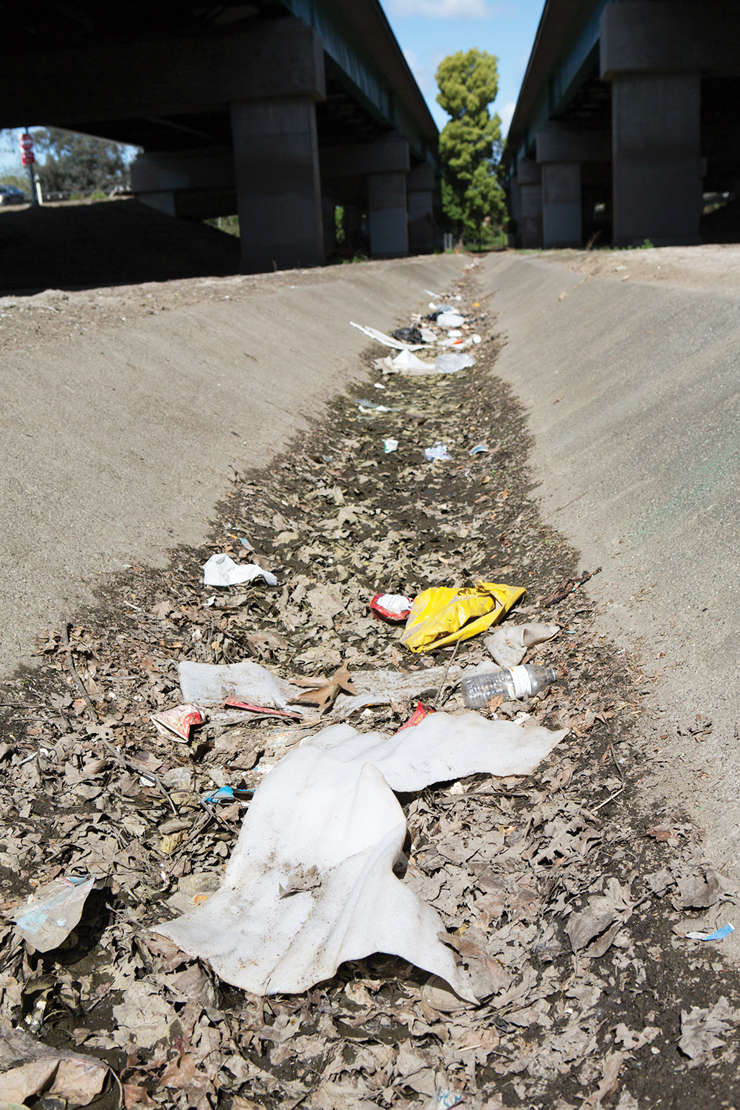
Garbage flows, floats downstream
Not only is litter unsightly, but much of it eventually winds up in waterways used for household consumption and recreation. Rain and wind can carry trash and tainted materials such as cigarette butts from roadways into storm drain systems, which then flows to streams, rivers and lakes — and eventually to bays and the ocean.
The sources of all the trash are many. Yes, garbage is thoughtlessly tossed out of car windows or dumped in vacated spots. However, most of the litter comes from loads that are unproperly tarped or tied down.
The California Highway Patrol is responsible for enforcing anti-littering laws along the State Highway System and can issue violation citations that start at $250, depending on the location.
Caltrans’ broad anti-litter effort demonstrates its commitment to reduce pollution in the communities it serves, one of the key goals of its 2015-2020 Strategic Management Plan. As the Department finalizes its next strategic plan, it continues to look for innovative ways to make California’s roadways tidier and less burdensome on Caltrans’ finite resources.
Caltrans Tackles Trash Capture with Renewed Strategies
Throughout the state, trash generated on land is carried during rainy periods to waterways such as rivers, lakes, and oceans. Caltrans is conducting statewide trash reduction efforts to meet the requirements of the Caltrans stormwater permit issued by the State Water Resources Control Board. The public traveling on the State Highway System have an important role to preserve California’s valuable water resources by doing their part not to litter.
Timely implementation of trash control measures is a priority for Caltrans in all high trash-generating land uses near the state highway system — high-density residential, commercial and industrial areas, as well as rest areas and park‐and‐ride zones.
Caltrans has undertaken critical steps to reduce trash throughout the state. They include:
Innovative Trash Capture Devices
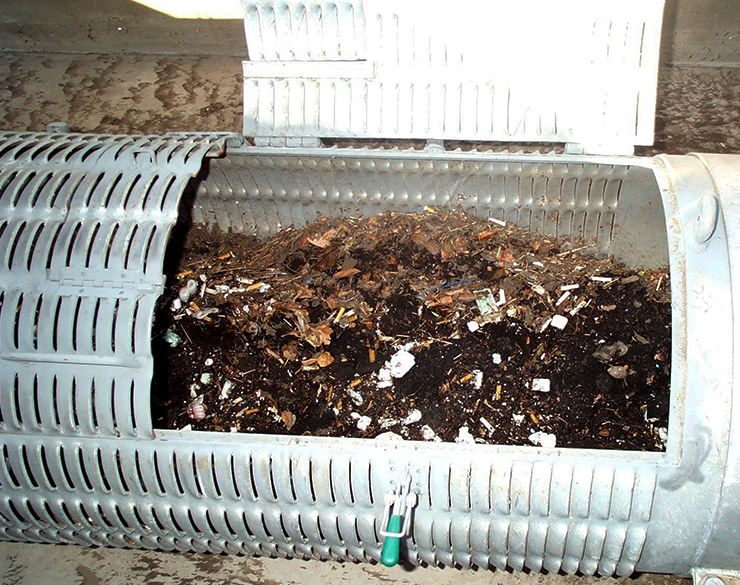
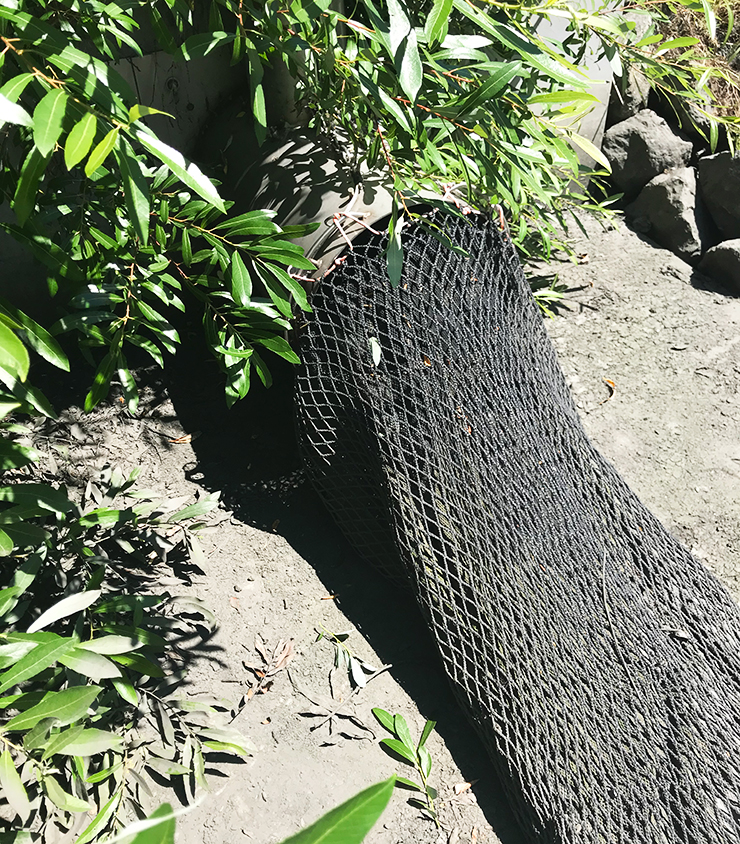
Caltrans has worked diligently to install trash capture devices, seeing through the process that includes product development and effectiveness monitoring. Engineers now deploy additional trash control tools when working on construction projects, utilizing new treatment opportunities and modifying existing drainage features.
One example is an end-of-pipe full trash capture net designed to remove trash from stormwater runoff flowing in a drainage system. These devices are easily installed in Caltrans’ right of way and are highly effective at collecting trash that enters the drainage system and is carried into the net. The nets are replaced once a year, and collected trash is disposed of appropriately.
Promising new trash-capture devices that can be retrofitted to existing infrastructure are being developed, providing additional low-cost tools that meet full trash capture compliance.
The Gross Solids Removal Device is another example of an approved treatment practice that has been certified by the state water board as meeting full trash capture requirements. Stormwater runoff enters a pipe or cage where waste solids (or trash) are captured. The screened water then runs out of the pipe or cage into a shallow concrete vault and is routed back into the drainage system.
Public Education
In 2000, Caltrans conducted a successful public education campaign, “Don’t Trash California,” to reduce the rate of littering within the state. The Department later expanded the program and initiated a statewide, multimedia bilingual campaign to educate the public on the importance of keeping pollutants out of the storm drain system. The "Protect Every Drop" program emphasized the importance of activities and behaviors that can reduce pollutants in stormwater runoff. A new stormwater education campaign that will continue the research, public education, and advertising efforts is being developed.
On another front, Caltrans regional districts across the state hosted another successful litter day event in June to educate the public about the importance of keeping roads clean. Littering is not only illegal, but pollutes California’s waterways and puts Caltrans maintenance crews at risk when having to work alongside the freeway to remove trash.
Agency Partnerships
Agencies such as Caltrans, California Highway Patrol, local municipalities, and state and regional boards have committed resources toward trash prevention by sharing ideas for solutions leading to improved trash source control. Caltrans continues to work with CHP to explore ways to reduce trash along the freeway system through increased and more effective enforcement of existing littering laws. Last year, CHP officers issued more than 3,100 citations for littering, and roughly one-third of those violations involved someone throwing out a lit cigarette.
Caltrans partners with local municipalities by providing funding for local projects that can treat large areas. These coordinated efforts remove harmful pollutants and trash from stormwater with the goal of restoring water quality in vulnerable areas.
Sources: Kenneth H. Johansson, Acting Stormwater Coordinator, Division of Environmental Analysis; Kenneth Murray, Senior Landscape Architect; Jason Probst, Staff Services Manager I; and Andrew Morse, Statewide Litter Abatement Coordinator, Caltrans Division of Maintenance.

